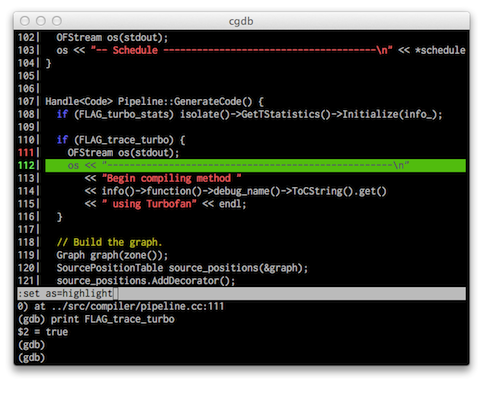Mastering GNU Debugger (gdb) is an essential skill for many programmers these days. In many cases, debugging using gdb is carried out straight from your favorite editor or IDE. For a quick stand-alone debugging session, a nice alternative is to use a visual, terminal-based wrapper for GDB called cgdb.
The usage of cgdb is designed to appeal vim users. When you launch cgdb, it shows a split-screen arrangement. The bottom half is the usual gdb console while the top half shows the content of the file where the program currently stops. The size of the window can be easily adjusted, I often shrink the gdb console to a minimum since I like to see more file content.
Everytime gdb does the single-stepping or moving to the next source line, the corresponding line in the source view will be highlighted. It is even customizable, either with an arrow indicator on the gutter or by highlighting the entire line. The source view window is always synchronized, if gdb jumps to another file then you will immediately see the content of that file.
Opening another source is also easy, thanks to its vim-like incremental filename search. Once a particular file is open, setting a breakpoint on a certain line is as simple as specifying the line number in the gdb console.
There are many different things you can do with cgdb, refer to its documentation for the details. If you are stuck with plain vanilla gdb hitherto, I highly recommend using cgdb for fun and profit!
